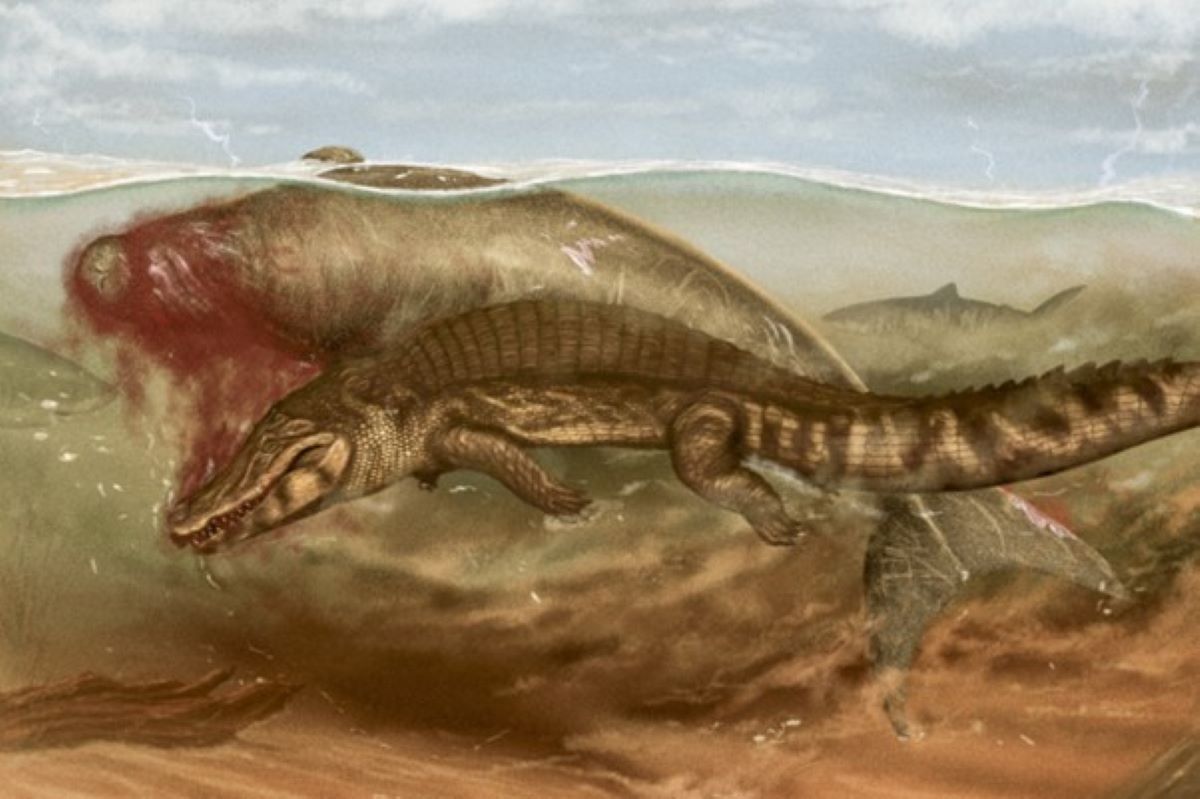Exciting new research has shed light on the ancient food chain, revealing that a prehistoric sea cow was preyed upon by two formidable predators: an ancient crocodile and a tiger shark. This unexpected find offers a rare glimpse into the complex interactions of marine life from millions of years ago.
The study, carried out by an international group of scientists and published in the Journal of Vertebrate Paleontology, is one of the few instances where a single prey species was targeted by multiple predators, making it a significant addition to our understanding of prehistoric ecosystems.
“Finding evidence of both a predator and scavenger interacting with the same prey is incredibly rare,” noted researcher Benites-Palomino.

This particular sea cow, from the extinct genus Culebratherium, faced a terrifying fate. It was first attacked by a crocodile that aimed to suffocate it by biting its snout—a technique reminiscent of modern crocodile “death rolls.” Shortly after, its remains were scavenged by a tiger shark, as evidenced by a tooth found nearby.
Benites-Palomino likened their research method to a detective story: “We study the scenarios of how predators engage their prey and match those to the findings in the fossil record.”

The fossilized remains were unearthed in the Agua Clara Formation of northwestern Venezuela, with dating placing them from the Early to Middle Miocene epoch, roughly 23 to 11.6 million years ago. This discovery is crucial as it highlights interactions between multiple predators and a single prey, a dynamic that occurs frequently in modern ecosystems but is underrepresented in the fossil record.
Benites-Palomino emphasized the significance of the find: “While predation evidence isn’t uncommon, distinguishing between act of predation and scavenging is often difficult due to fragmentary fossils.”
The excavation was spearheaded by Marcelo Sanchez-Villagra from the Palaeontological Institute and Museum in Zurich. The site was first identified by a local farmer who noticed unusual rocky formations, leading the team to a rewarding discovery of sea cow fossils. “Initially, we weren’t sure of the site’s geology; we discovered sea cow skulls, which were quite unusual,” Sanchez-Villagra remarked.
Careful preservation of the fossils, attributed to their embedding in fine sediments, allowed for detailed analysis of predation marks. “The excavation lasted about seven hours with a small team, and the preparation took several months due to the intricate restoration required,” he added.
References
Benites-Palomino, A., Aguirre-Fernández, Gabriel, Velez-Juarbe, J., Carrillo-Briceño, J. D., Sánchez, R., & Sánchez-Villagra, M. R. (2024). Trophic interactions of sharks and crocodylians with a sea cow (Sirenia) from the Miocene of Venezuela. Journal of Vertebrate Paleontology. https://doi.org/10.1080/02724634.2024.2381505
